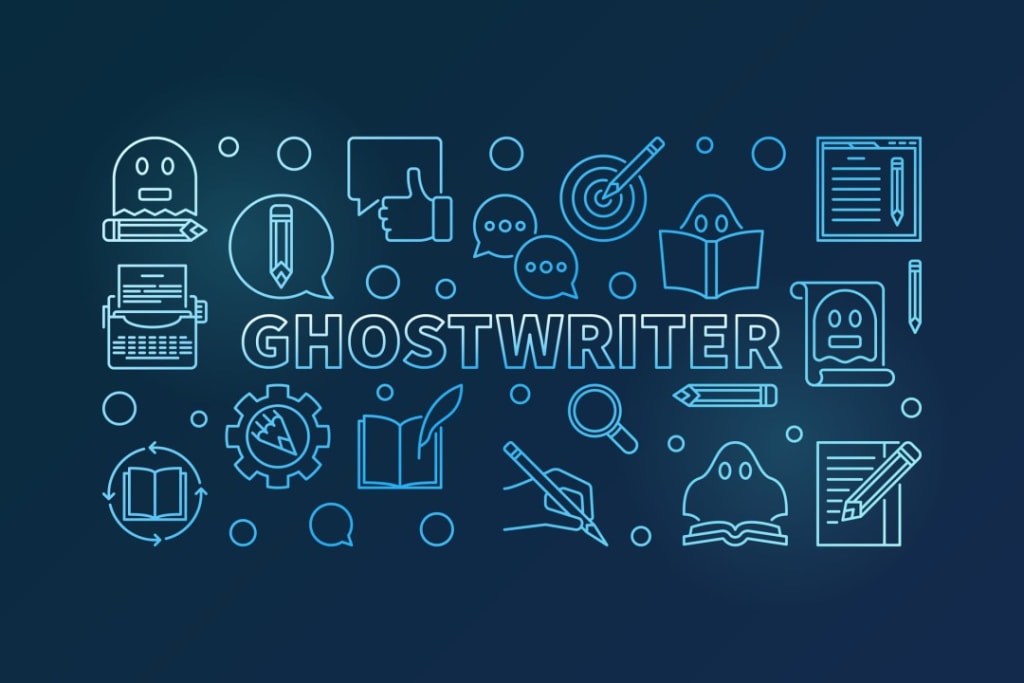How Professional Ghostwriters Turn Ideas into Bestsellers

Strong 8k brings an ultra-HD IPTV experience to your living room and your pocket.
The journey from a rough idea to a polished bestseller is rarely a solo effort. Behind many successful books—whether memoirs, business guides, or novels—are professional ghostwriters who transform concepts into compelling narratives. But how exactly do they do it? This article reveals the step-by-step process ghostwriters use to craft books that resonate with readers and climb bestseller lists.
1. Deep Discovery: Unearthing the Core Idea
Before writing begins, professional ghostwriters invest time in understanding the author’s vision.
Key Steps in the Discovery Phase:
• Author Interviews: Ghostwriters conduct in-depth conversations to extract key stories, insights, and themes.
• Audience Research: They identify the target readers’ preferences (e.g., business leaders, memoir enthusiasts).
• Competitive Analysis: They study similar bestsellers to find gaps and opportunities.
Example: When writing a CEO’s memoir, a ghostwriter might focus on turning dry career milestones into a human-centered success story with emotional highs and lows.
2. Strategic Structuring: Crafting a Bestseller Blueprint
A disorganized manuscript rarely becomes a hit. Ghostwriters create a detailed outline to ensure the book flows logically.
Elements of a Winning Structure:
✔ Hook-Driven Opening – Grabs attention immediately (e.g., a pivotal life moment).
✔ Thematic Chapters – Breaks complex ideas into digestible sections.
✔ Narrative Arc – Builds momentum, whether for a memoir or business book.
Case Study: Atomic Habits by James Clear (developed with editorial support) uses a clear, actionable framework—a technique many ghostwriters replicate for nonfiction bestsellers.
3. Capturing the Author’s Voice
A ghostwritten book must sound like the author—not the ghostwriter.
Voice-Building Techniques:
• Studying Past Content: Reviewing the author’s speeches, articles, or interviews.
• Mimicking Speech Patterns: Using conversational phrasing for authenticity.
• Feedback Loops: Regularly checking in with the author for tone adjustments.
Pro Tip: Some ghostwriters record interviews and transcribe them to preserve the author’s natural cadence.
4. Research That Adds Credibility
Bestsellers often blend personal stories with data-backed insights.
How Ghostwriters Enhance Research:
• Interviewing Subject Experts (for niche topics like finance or health).
• Incorporating Studies & Stats (to reinforce arguments).
• Fact-Checking (to avoid credibility pitfalls).
Example: The 4-Hour Workweek (Tim Ferriss) uses a mix of personal experiments and research—a balance ghostwriters often emulate.
5. Engaging Storytelling (Even for Nonfiction)
The best nonfiction books read like page-turning stories.
Ghostwriting Techniques for Engagement:
• Anecdotes & Case Studies – Making theories relatable.
• Suspense & Pacing – Even business books benefit from tension.
• Metaphors & Analogies – Simplifying complex topics.
Memoir Tip: Ghostwriters often structure autobiographies like hero’s journeys—overcoming obstacles to achieve success.
6. Collaborative Revisions
A first draft is just the beginning. Professional ghostwriters refine through:
✔ Author Feedback Rounds – Ensuring accuracy and voice match.
✔ Developmental Edits – Improving flow and impact.
✔ Professional Line Editing – Polishing sentences for readability.
Industry Secret: Most bestsellers go through 5-10 drafts before publication.
7. Aligning with Market Trends
Ghostwriters don’t just write—they study the market to boost a book’s commercial potential.
Bestseller-Boosting Tactics:
• Optimizing Titles & Subtitles (e.g., “How to Win Friends and Influence People”).
• Leveraging Timely Themes (e.g., post-pandemic resilience in business books).
• Platform Integration – Aligning the book with the author’s brand (e.g., TED speakers).
Caution: Trends fade, so ghostwriters balance relevance with evergreen value.
8. Preparing for the Publishing Journey
Many ghostwriters guide authors on next steps, including:
• Querying Agents – For traditional publishing.
• Self-Publishing Prep – Formatting, cover design, and Amazon SEO.
• Launch Strategies – Leveraging the author’s network for promotions.
Example: A ghostwriter might help a CEO plan a LinkedIn book launch campaign to reach their professional audience.
Why This Process Works
Professional ghostwriters combine writing skill, market savvy, and psychological insight to create books that:
✅ Feel authentic to the author.
✅ Resonate with readers emotionally.
✅ Stand out in crowded markets.
Final Thoughts
Turning an idea into a bestseller isn’t magic—it’s a methodical, collaborative process. Professional ghostwriters serve as invisible architects, blending storytelling, research, and strategy to produce books that sell.
Key Takeaways:
✔ Discovery shapes the book’s soul.
✔ Structure determines readability.
✔ Voice authenticity is non-negotiable.
✔ Market awareness drives commercial success.
Whether you’re an entrepreneur, aspiring author, or public figure, understanding this process can help you collaborate effectively with a ghostwriter—or recognize when you need one.
Note: IndiBlogHub features both user-submitted and editorial content. We do not verify third-party contributions. Read our Disclaimer and Privacy Policyfor details.


